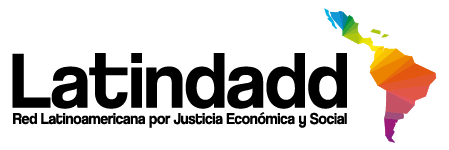Desde la emisión de los Derechos Especiales de Giro (DEG) en agosto de 2021 hasta la fecha, un total de 80 países utilizaron estos recursos provenientes del Fondo Monetario Internacional (FMI), de los cuales 39 países los han registrado dentro de sus presupuestos gubernamentales para darles un uso fiscal, como se planteó LATINDADD en el Manual de uso de los DEG para fines fiscales.
Esta información nace a partir de una investigación realizada por Andrés Araúz, economista y exdirector general del Banco Central de Ecuador, quien hizo un seguimiento país por país al uso y destino de los DEG, tomando como base los informes del Fondo Monetario Internacional (FMI), sitios web de los gobiernos y notas de prensa, la mayor parte incluida en los informes mensuales del Centro de Investigación Económica y Política (CEPR, por sus siglas en inglés).
La pesquisa iniciada por Arauz determinó que el monto registrado en el presupuesto de estos 39 países asciende a aproximadamente 37.300 millones de dólares. Los países de América Latina y el Caribe (ALC) que se encuentran en este grupo son nueve: Argentina, México, Colombia, Ecuador, Panamá, Paraguay, Guyana, Haití y Antigua y Barbuda.
Los restantes países, en orden descendente según tamaño, que han incorporado los DEG dentro de sus presupuestos gubernamentales son: Ucrania, Filipinas, Irak, Congo (Brazzaville), Zambia, Líbano, Ghana, Túnez, Senegal, Etiopía, Bosnia y Herzegovina, Zimbabue, RD del Congo, Moldavia, Sudán del Sur, Togo, Macedonia del Norte, Chad, Malawi, Níger, Mauritania, Camerún, República Centroafricana, Cabo Verde, Maldivas, Comoras, Santo Tomé y Príncipe, Nauru.
La mayoría de los países reportan que el destino final de estos recursos serán utilizados en gastos para hacer frente a la pandemia, mecanismo de ayudas en el contexto de la crisis causada por la Covid-19, gastos de capital y cobertura del déficit fiscal con el fin de evitar nueva deuda.
Si bien muchos países han registrado los DEG que recibieron el año pasado en sus presupuestos, aún no los han convertido a una moneda fuerte (por ejemplo a dólares). En ALC, quienes sí realizaron este cambio de monedas fueron Ecuador, Paraguay, Haití y Antigua y Barbuda. En el caso de Argentina, esta destinó sus DEG para pagar parte de sus obligaciones con el FMI, como señalan Andrés Araúz y Kevin Cashman en un artículo del CEPR.
Esto muestra que los países sí pueden destinar sus DEG para enfrentar la pandemia y la crisis múltiple y que pueden ser utilizados por los Estados, además, se debe pensar no sólo en la contención del COVID-19 sino también en una recuperación de los países que sea más sostenible y justa.
39 countries have already used SDRs worth US$37 billion
Since the issuance of the Special Drawing Rights (SDR) in August 2021 to date, a total of 80 countries have used these resources from the International Monetary Fund (IMF), of which 39 countries have registered them within their government budgets to give them a fiscal use, as LATINDADD proposed in the Manual for the use of SDRs for fiscal purposes.
This information stems from an investigation carried out by Andres Arauz, economist and former director general of the Central Bank of Ecuador, who monitored a large set of countries on the use and destination of SDRs, based on reports from the IMF, government websites and press releases, most of which are included in the monthly reports of the Center for Economic and Policy Research (CEPR).
Arauz´ initial research determined that the amount registered in the budget of these 39 countries amounts to approximately 37,3 billion US dollars. The countries of Latin America and the Caribbean (LAC) that are in this group are nine: Argentina, Mexico, Colombia, Ecuador, Panama, Paraguay, Guyana, Haiti and Antigua & Barbuda.
The remaining countries, in descending order in terms of size, that have incorporated SDRs into their government budgets are: Ukraine, Philippines, Iraq, Congo (Brazzaville), Zambia, Lebanon, Ghana, Tunisia, Senegal, Ethiopia, Bosnia & Herzegovina, Zimbabwe, DR Congo, Moldova, South Sudan, Togo, North Macedonia, Chad, Malawi, Niger, Mauritania, Cameroon, Central African Republic, Cape Verde, Maldives, Comoros, Sao Tome and Price, Nauru.
Most of the countries report that these resources will be used in expenses to face the pandemic, implement aid mechanisms in the context of the crisis caused by Covid-19, capital expenses and financing the fiscal deficit in order to avoid new debt.
While many countries have recorded the SDRs they received last year in their budgets, they have not yet converted them into hard currency (e.g. dollars). In LAC, those who did carry out this currency exchange were Ecuador, Paraguay, Haiti and Antigua & Barbuda. Argentina, used its SDRs to partially repay its obligations with the IMF, as pointed out by Andres Arauz and Kevin Cashman in a CEPR article.
This shows that countries can allocate their SDRs to face the pandemic and the multiple crisis and that SDRs can be efficiently used by the States. In addition, it is necessary to think not only about the containment of COVID-19 but also about a sustainable and fair recovery of all countries.







